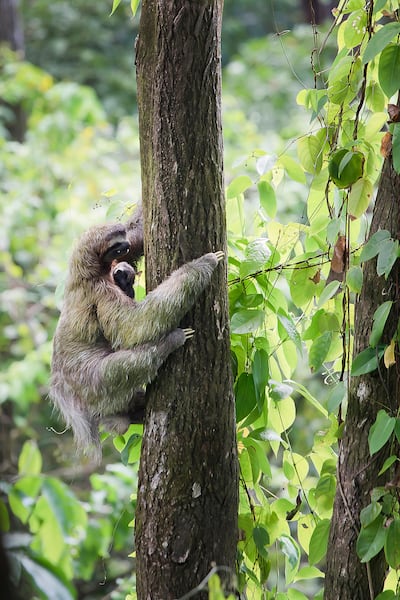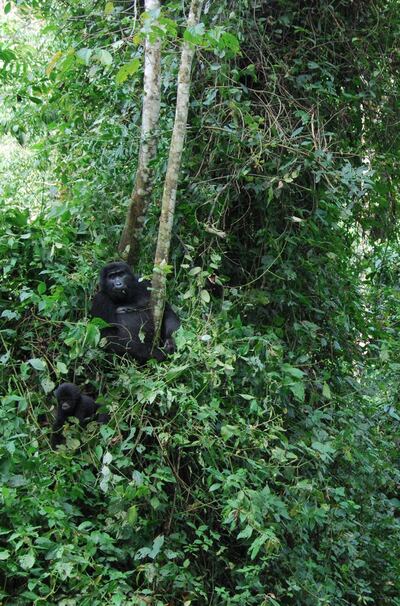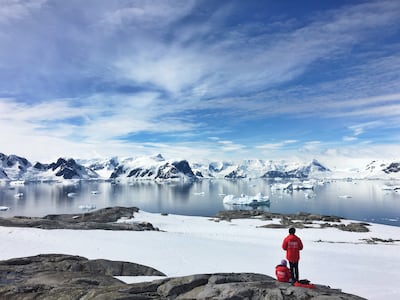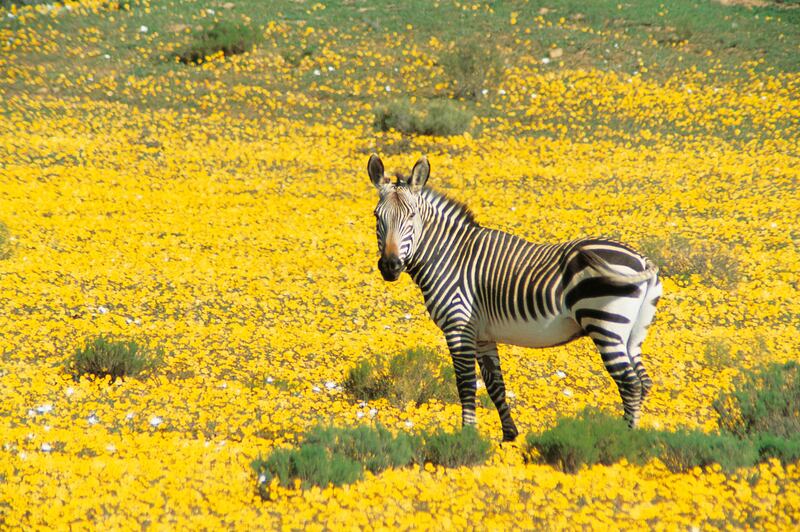The Amazon Rainforest, Kruger National Park and Great Barrier Reef are among some of the world’s most-visited tourist attractions.
And one of the reasons travellers are drawn to such destinations is their rich biodiversity.
“People travel to national parks and protected land and seascapes to see thriving wildlife populations, healthy ecosystems and to marvel at the unique indigenous cultures and traditions as part of nature,” Madhu Rao, chairwoman for the IUCN World Commission on Protected Areas, said in the report Nature Positive Travel and Tourism, released in September.
Also last year, the study Wildlife Tourism, published by Future Market Insights, projected the sector to grow at a 5 per cent compound annual growth rate over the next 10 years.
At the same time, extinction rates are accelerating around the world. This global biodiversity crisis means that a million species of plants and animals face extinction, the United Nations has said in resources shared for its celebration of World Wildlife Day.
But the industry supports nearly 22 million jobs around the world and contributes more than $120 billion to the global GDP, according to a study by the World Travel and Tourism Council in 2019.
This can all lead to dilemmas for travellers when it comes to considering holidays to destinations where the wildlife is one of the major draws. But it doesn’t need to be complicated.
For Jeremy Clubb, founder of Rainforest Cruises, a sustainable travel company that offers riverboat cruises and responsible tours to wildlife-rich regions around the world, it’s all about awareness.
“Travellers need to be conscious of how their presence in these environments is not only a real privilege, but also potentially detrimental to the very same beautiful wildlife that they are there to witness in the first place,” he says.
There are several ways that travellers can be environmentally and ethically conscious when travelling, and the good news is, none of them mean missing out on the wonders of Mother Nature.
Travel with a credible and certified company

An easy way to ensure that trips are ethical and environmentally sound is to choose to travel with a credible company.
Beyond Green has a curated portfolio of the world's most sustainable hotels, many of which offer experiences where guests can learn about the importance of protecting wildlife in some of the world’s most beautiful and unique destinations.
Among its members are Arenas Del Mar in Costa Rica, where there is a thriving nature reserve for rescue sloths and in Zanzibar there's AndBeyond Mnemba Island, where guests can experience a green turtle nesting adventure while learning about the work being done by marine conservation initiative Oceans Without Borders.
From places such as the privately owned Islas Secas in Panama, where marine conservation is at the heart of the 14-island archipelago, to the eco-friendly safari lodges across Africa operated by Great Plains, where revenue from visits helps to fund projects that restore critical habitats and conserve wildlife, there are plenty of ethical options.
Travellers who are unsure about a company’s ethical stance shouldn’t be afraid to ask questions. Legitimate companies that offer responsible animal-watching opportunities will have plenty to say on ethical tourism.
“It’s imperative to choose operators that offer ethical experiences that do not interact with animals in exploitative ways, such as zoos or elephant rides. Checking that the company you’re considering travelling with is a member of an association committed to sustainable travel and adhering to ecotourism principles, and supports wildlife or conservation charities in the destinations they operate in, is a great indication that you’re going to be travelling responsibly,” says Clubb.
Travel with local, approved naturalist guides
One of the most crucial aspects of any wildlife tour is ensuring that guides accompanying travellers are approved naturalists, and it's even better if they are local.
“These guides are not only experts in tracking, spotting and identifying animals that you might not otherwise see, but they can also share their species knowledge, including how best to behave around them as not to disturb them,” says Clubb.
Employing local guides also helps to fund the local community, allowing tourism dollars to filter back to the people who call these nature-rich destinations home.
Do not touch the wildlife

A good rule of thumb for responsible wildlife encounters is not to touch the animals, which means that elephant rides — no matter how ethical places say they are — should be out for all travellers.
Touching animals can have serious consequences in both the short and long term, for travellers and for the animal in question.
“Under no circumstances should you touch the animals, as not only are you putting yourself in considerable danger from being bitten, clawed, or exposed to unseen toxins or diseases, but you can also cause them significant stress and transmit germs, diseases, and even smells,” says Clubb.
“While it might be tempting to stroke a doe-eyed Galapagos sea lion pup, one touch is all it would take to transmit your smell and germs to them. Not only might you make them ill, but more crucially, Galapagos sea lion mothers recognise their pups by smell, so if this is compromised, mothers have been known to reject their own young, often proving fatal for those pups still nursing.”
And tourists don’t need to touch the wildlife to enjoy a unique experience. Many travel companies offer the opportunity to observe animals engaging in natural behaviours in their natural environments. One great example of this is via gorilla trekking trips in Uganda, Rwanda and the Democratic Republic of Congo.
Though rules vary between the destinations, the activity is one of the most regulated and controlled animal experiences out there — with only small groups of visitors allowed at a time, strict rules for tourists to follow and a strict no-touching policy. Conservation efforts, many of which have been aided by tourism dollars, have boosted the worldwide mountain gorilla population. Meanwhile the cost of permits needed to take part in the activity can help pay staff to protect the animals from poachers, simultaneously boosting the economy of local communities.
Do not feed the animals

Despite what might seem like common practice in some destinations, tourists should avoid feeding wildlife when travelling.
“Feeding creatures food that is not naturally found in their diet could be toxic to their health, or may contain the seeds of invasive plant species, which the animal may consume and, later, unintentionally spread,” says Clubb.
Equally important is the idea that feeding a wild animal can hamper its instinctive nature to seek out food for itself.
A good example of this was seen during the global pandemic when Japan’s nationally protected Nara deer, which have become reliant on tourists feeding them rice crackers, were suddenly left wandering Nara Park with no tourists in sight. While many of the creatures left the park, returning to a wilder life, some struggled to regain their natural instincts to find food and faced malnutrition.
Stick to designated paths and trails

There’s something great about getting off the beaten path when it comes to travel, but it’s something that adventurers should be cautious of when it comes to wildlife tourism.
“Whilst Whilit can be easier said than done to venture off of designated trails in remote and wild locations, even if accidental, many may not realise that this can be hazardous to both the wildlife and the travellers themselves,” says Clubb.
In the Galapagos Islands there are marked trails at visitors' sites that travellers should follow to help prevent irreparable damage to native wildlife and its habitats.
A similar set-up exists in Ile Aux Aigrettes, Mauritius’ historic protected nature reserve that’s home to giant centenarian tortoises.
And in Antarctica — tourists are only allowed to venture out under the supervision of guides, both to protect the environment and to help protect travellers against hungry polar bears.
So on your next adventures, you may want to resist the urge to go off the beaten track for the well-being of the local wildlife, as well as your own.







